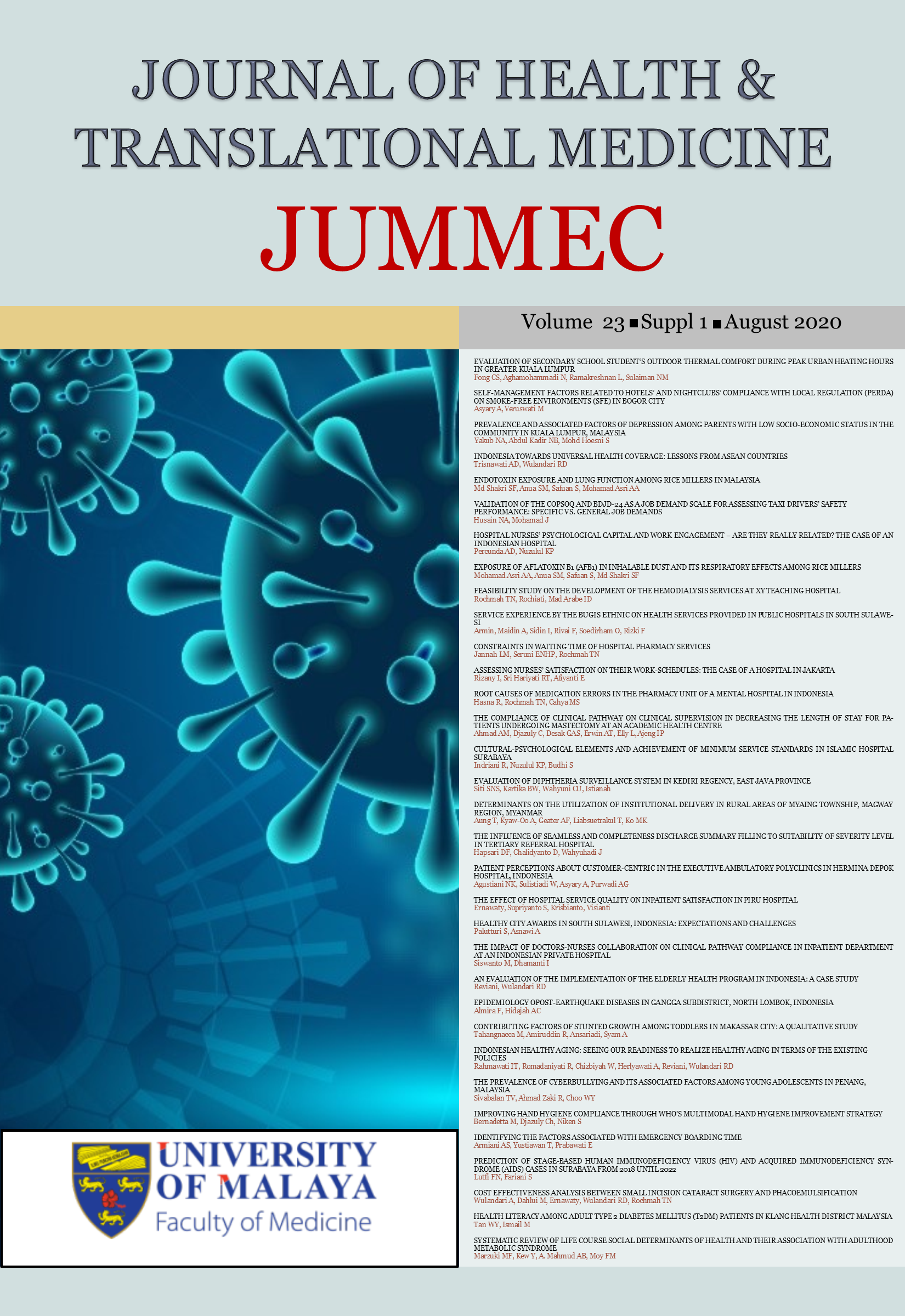THE IMPACT OF DOCTORS-NURSES COLLABORATION ON CLINICAL PATHWAY COMPLIANCE IN INPATIENT DEPARTMENT AT AN INDONESIAN PRIVATE HOSPITAL
Keywords:
Clinical pathway, Doctor, Implementation, Inpatient unitAbstract
Background: Clinical pathway has a direct impact on the care of individual patients, including improved quality of care and improved safety. One of the professional caregivers who influence the successful implementation of the clinical pathway is the doctor. However, doctors are also the factors which reduce the effectiveness of the clinical pathway implementation.
Aim: To compare the implementation of clinical pathway before and after intervention.
Methods: This study was a pre-and-post study design that involved analysis and socialization. For medical record analysis, we included all cases on dengue hemorrhagic fever, typhoid, acute appendicitis, gallstones, and unilateral inguinal hernia that were obtained within 2 periods. The first period was obtained on July 1 to December 31 2016, and then the second period was on April 1 to September 30 2017. We conducted the socialization towards 27 doctors focusing on the importance of clinical pathway and its compliance. We involved the nurses to directly remind the doctors to complete the clinical pathway forms every time the doctors visited the patients from January to March 2017. The reminders were attached to the patient medical records and were checked by the head nurse in every ward. The data were analyzed using McNemar.
Results: We collected 142 pre- and 106 post-intervention cases with the stated diagnosis. The average of the clinical pathway compliance before the intervention was 32.40%. After the intervention, the clinical pathway compliance increased significantly to 73.95% (p=0.001047).
Conclusion: Collaboration between the doctors and the nurses is the key factor to improve the clinical pathway implementation in hospital. Reminders for the doctor are kind of the strategies to improve the clinical pathway implementation in the hospital.
Downloads
Downloads
Published
Issue
Section
License
All authors agree that the article, if editorially accepted for publication, shall be licensed under the Creative Commons Attribution License 4.0 to allow others to freely access, copy and use research provided the author is correctly attributed, unless otherwise stated. All articles are available online without charge or other barriers to access. However, anyone wishing to reproduce large quantities of an article (250+) should inform the publisher. Any opinion expressed in the articles are those of the authors and do not reflect that of the University of Malaya, 50603 Kuala Lumpur, Malaysia.


